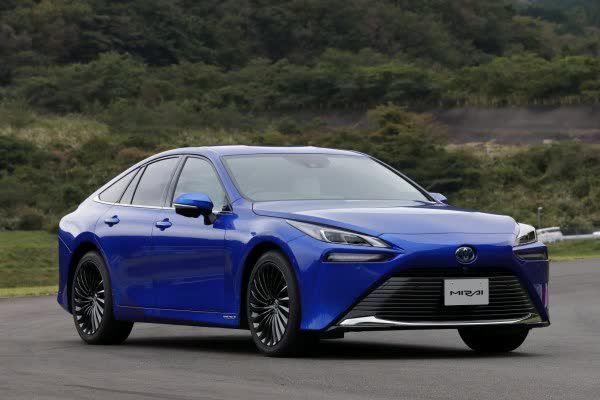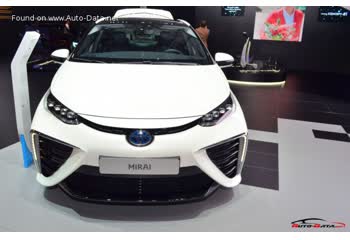Everything you need to know about specifications and performance - Toyota Mirai 2020 - 1.2 kWh (182 Hp) FCEV

Overview:
How powerful is the electrical system in the Toyota Mirai 2020?
The power of the electrical system in the Toyota Mirai 2020 is 182 Hp hp.
General:
Brand: Toyota
Model: Mirai
Generation: Mirai II
Modification (Engine): 1.2 kWh (182 Hp) FCEV
Start of production: 2020
End of production:
Powertrain Architecture: FCEV (Fuel Cell Electric Vehicle)
Body type: Sedan
Seats: 5
Doors: 4
Engine:
Performance:
Fuel Type: Hydrogen
Acceleration 0 - 100 km/h: 9.2 sec
Acceleration 0 - 62 mph: 9.2 sec
Maximum speed: 175 km/h
Weight-to-power ratio: 10.4 kg/Hp, 95.8 Hp/tonne
Weight-to-torque ratio: 6.3 kg/Nm, 157.9 Nm/tonne
Acceleration 0 - 60 mph: 8.7 sec
Electric system:
Gross battery capacity: 1.2 kWh
Battery technology: Lithium-ion (Li-Ion)
Battery location: Inside the trunk
System power: 182 hp
System torque: 300 nm
Electric motor power: 182 hp
Electric motor Torque: 300 nm
Electric motor location: Rear, Transverse
Battery weight: 45 kg
Battery voltage: 310.8 V
Space:
Kerb Weight: 1900-1950 kg
Max. weight: 2415 kg
Max load: 465-515 kg
Fuel tank capacity: 5.6 kg
dimensions:
Length: 4975 mm
Width: 1885 mm
Height: 1480 mm
wheelbase: 2920 mm
Front track: 1610 mm
Rear (Back) track: 1605 mm
Front overhang: 965 mm
Rear overhang: 1090 mm
Ride height (ground clearance): 150 mm
Minimum turning circle (turning diameter): 12.6 m
Powertrain, Suspension and Brakes:
Drivetrain Architecture: One electric motor drives rear wheels.
Drive wheel: Rear wheel drive
Number of gears and type of gearbox: 1 gears, automatic transmission
Front brakes: Ventilated discs
Rear brakes: Ventilated discs
Assisting systems: ABS (Anti-lock braking system)
Steering type: Steering rack and pinion
Power steering: Electric Steering
Tires size: 235/55 R19; 245/45 R20
Wheel rims size: 8.0J x 19; 8.5J x 20
Front suspension: Independent multi-link suspension, Transverse stabilizer
Rear suspension: Independent multi-link Spring suspension with stabilizer
See also

Other generation.
Its production began in 2014 until 2020
Write a comment